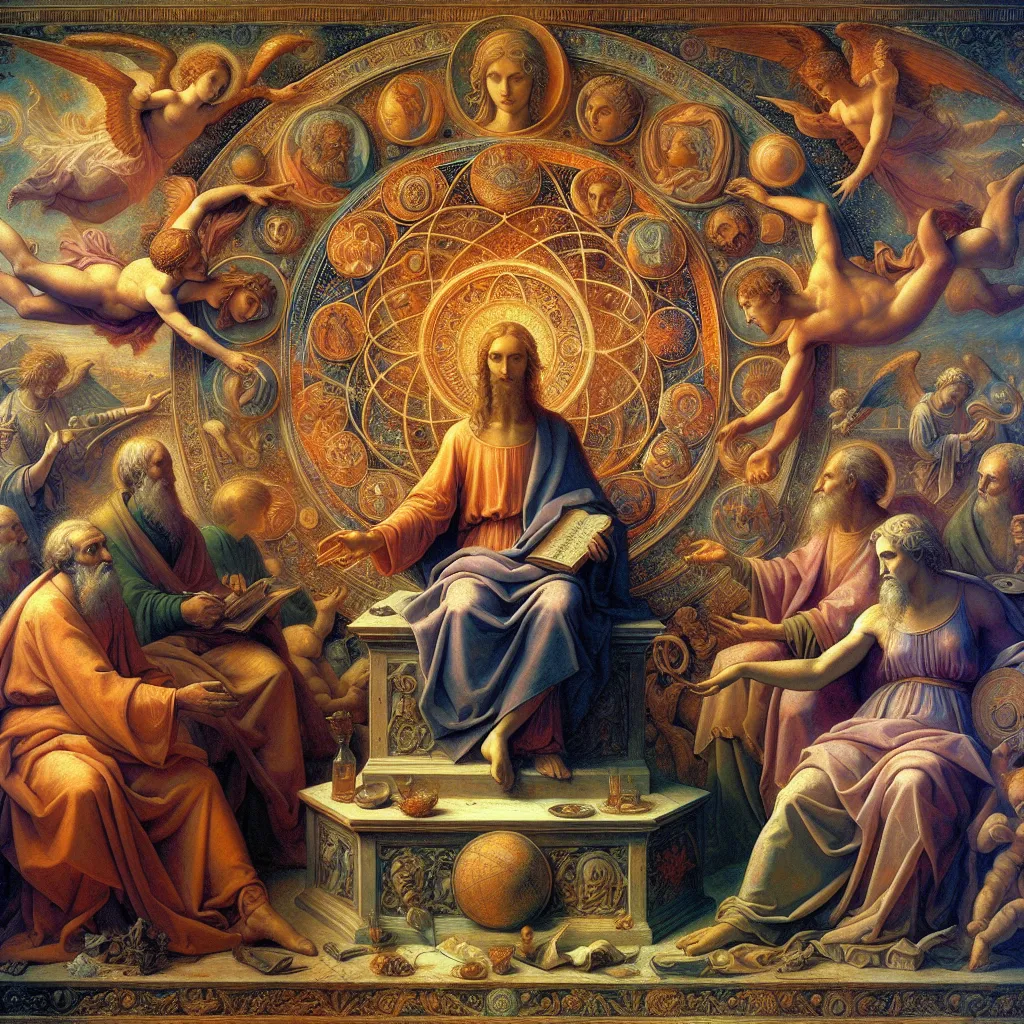
- Published on
- Authors

- Name
- You
The Valentinian School of Gnosticism: Mystical Wisdom Intertwined with Christian Thought
Introduction
Imagine a tapestry where threads of divine knowledge and cosmic mysteries weave together to create a narrative that transcends conventional Christian theology. Welcome to the Valentinian School of Gnosticism, an ancient and influential spiritual tradition that marries the mystical with the doctrinal, extending the frontiers of human understanding. This article takes you on a journey through time, exploring the core teachings, key figures, and enduring influence of Valentinian Gnosticism.
What is Gnosticism?
Defining Gnosticism
Gnosticism is a term derived from the Greek word gnosis, meaning "knowledge." This knowledge is not merely intellectual but a transformative inner knowing—a mystical insight into the nature of reality and the divine. Gnosticism is a collective term for various esoteric beliefs that emerged in the early centuries CE, often emphasizing personal spiritual enlightenment over institutionalized religion.
Key Concepts
- Divine Spark: The belief that a fragment of the divine resides within each individual.
- Dualism: A world-view that posits a division between the spiritual and the material realms.
- Aeons and Pleroma: Complex hierarchies of divine beings and realms constituting the fullness of the divine.
The Birth of Valentinian Gnosticism
Valentinus: The Visionary
Valentinus (c. 100-160 CE) was an early Christian teacher whose profound understanding of both Platonic philosophy and Christian theology resulted in one of the most sophisticated Gnostic systems. Originating in Alexandria—a melting pot of philosophical and spiritual traditions—Valentinus' teachings synthesized various influences into a coherent spiritual framework.
Key Teachings
Theology of Pleroma
In Valentinian cosmology, the Pleroma represents the fullness of the divine, inhabited by a series of Aeons emanating from the ultimate source, the Monad. This concept parallels the hierarchical structures found in quantum mechanics, wherein subatomic particles emanate from an undivided quantum field.
The Fall and Redemption
According to Valentinian belief, the material world arose from a tragic fall in the spiritual realm. The figure of Sophia (Wisdom) plays a pivotal role, whose yearning led to the creation of a flawed material world. Redemption, therefore, involves reawakening the divine spark within through gnosis.
Major Figures and Their Contributions
Ptolemaeus
A prominent disciple of Valentinus, Ptolemaeus further developed Valentinian theology, emphasizing the salvific role of Christ as the ultimate Gnostic revealer. His teachings contributed to the reconciliation of Gnostic thought with mainstream Christian doctrine.
Heracleon
Heracleon, another notable Valentinian, is remembered for his exegetical works on the Gospel of John. His allegorical interpretations highlighted the deeper spiritual meanings behind the text, showcasing an early form of mystical Bible study.
Valentinian Influence on Christianity
The Gospel of Truth
Attributed to Valentinus, the Gospel of Truth offers a poetic and mystical vision of Christian salvation, presenting a profound synthesis of Gnostic and Christian ideas. It’s a work that bridges the gap between esoteric wisdom and mainstream faith.
Impact on Early Church Fathers
Despite controversy and eventual denunciation by the orthodox Christian establishment, Valentinian ideas significantly influenced early Church Fathers like Clement of Alexandria and Origen. Their writings reflect subtle yet profound integrations of Gnostic thought, particularly in their mystical and allegorical approaches to Scripture.
Epilogue: The Eternal Quest for Knowledge
The Valentinian School of Gnosticism invites us to delve deeper into the mysteries of existence, blending the spiritual with the intellectual. Its teachings encourage a mystical yet rational journey towards self-knowledge and divine realization.
Table: Key Valentinian Concepts and Their Modern Parallels
| Valentinian Concept | Explanation | Modern Parallel |
|---|---|---|
| Divine Spark | Fragment of the divine within each individual | Quantum Entanglement |
| Dualism | Separation of spiritual and material realms | Dual Nature of Light (Wave-Particle Duality) |
| Pleroma | Fullness of the divine and its emanations | Multiverse Theory |
Conclusion
Through the lens of Gnosticism and the teachings of Valentinus, we glimpse an ancient yet timeless pursuit of truth and enlightenment. This blend of esoteric wisdom and early Christian thought demonstrates that the quest for understanding is universal, inviting us to explore the depths of our own consciousness and the cosmos at large.
Continue your journey of discovery with Valentinian Gnosticism, and may your path be illuminated with both knowledge and wisdom.
